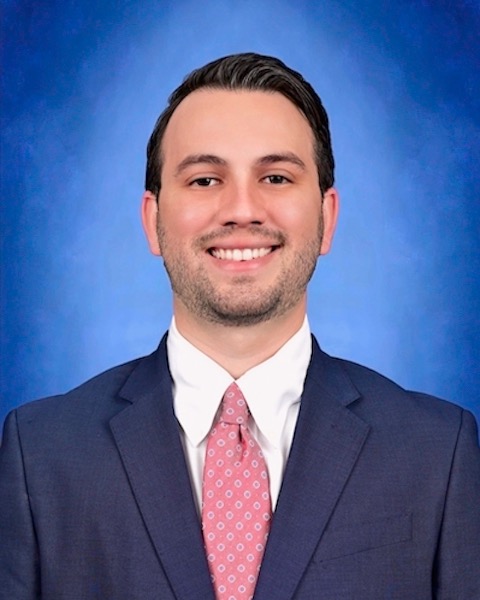Back


Poster Session C - Monday Afternoon
Category: Colon
C0141 - A Twist of Fate: The Cecal Bascule
Monday, October 24, 2022
3:00 PM – 5:00 PM ET
Location: Crown Ballroom

Has Audio

Orlando A. Rodriguez-Amador, MD
VA Caribbean Health Care System
San Juan, PR
Presenting Author(s)
Orlando A. Rodriguez Amador, MD, Zeyn Mirza, MD, Camille Diaz Garcia, BS, Jose Martin-Ortiz, MD, FACG
VA Caribbean Health Care System, San Juan, Puerto Rico
Introduction: Cecal volvulus is a rare clinical entity with an incidence of 2.8-7.1 per million per year and accounts for 1-2% of large bowel obstruction. The rarest type of cecal volvulus is cecal bascule, accounting for 5-20% of all cases. It occurs when the cecum folds up over itself in an anteromedial orientation with a competent ileo-cecal valve. This allows for gaseous and fluid distention. The pathogenesis is still unclear but the literature suggests that congenital or acquired adhesion may be responsible as a mobile cecum. Symptoms consist of abdominal pain, distention, nausea and obstipation. Diagnosis may be challenging due to its rarity. Here we present a male with an incidental imaging finding suggestive of cecal bascule.
Case Description/Methods: An 82 y/o male patient with history of prostate cancer, atrial fibrillation on Apixaban, diabetes and chronic kidney disease who was consulted to gastroenterology services due to rectal bleeding. He reported an episode of intermittent rectal bleeding in the past year mostly secondary to straining due to constipation. Last colonoscopy on 2010 showed diverticulosis plus internal and external hemorrhoids; no polyps or masses. He denied abdominal pain, weight loss, or early satiety. Hemoglobin was stable and normal rectal exam. In view of risk vs benefits patient opted for CT colonography. Study with evidence of diverticulosis and a large cecal bascule. Upon follow-up, he reported feeling well and denied abdominal pain or recurrence of rectal bleeding. He had a complicated appendectomy 7 years ago. Patient was consulted to general surgery for possible cecopexy.
Discussion: Cecal bascule is a rare subtype of cecal volvulus that mostly occur in older patients and usually presents with marked GI symptoms, such as obstruction, needing emergent treatment. Risk factors are mostly due to embryogenic defects or iatrogenic (abdominal surgery). Diagnosis is made via imaging study, such as CT, or laparoscopy showing the cecum folding upward resulting in obstruction. Management is mostly surgical with resection and cecopexy. Here with present a case of cecal bascule with a rare presentation of minimal symptoms. The patient had history of a complicated appendectomy most likely being the inciting factor of the cecal bascule. Most cases in literature present after a more recent surgical procedure. The importance of this case is to bring attention of this rare clinical entity, its diagnosis and how it may present with non-specific chronic symptoms.
Disclosures:
Orlando A. Rodriguez Amador, MD, Zeyn Mirza, MD, Camille Diaz Garcia, BS, Jose Martin-Ortiz, MD, FACG. C0141 - A Twist of Fate: The Cecal Bascule, ACG 2022 Annual Scientific Meeting Abstracts. Charlotte, NC: American College of Gastroenterology.
VA Caribbean Health Care System, San Juan, Puerto Rico
Introduction: Cecal volvulus is a rare clinical entity with an incidence of 2.8-7.1 per million per year and accounts for 1-2% of large bowel obstruction. The rarest type of cecal volvulus is cecal bascule, accounting for 5-20% of all cases. It occurs when the cecum folds up over itself in an anteromedial orientation with a competent ileo-cecal valve. This allows for gaseous and fluid distention. The pathogenesis is still unclear but the literature suggests that congenital or acquired adhesion may be responsible as a mobile cecum. Symptoms consist of abdominal pain, distention, nausea and obstipation. Diagnosis may be challenging due to its rarity. Here we present a male with an incidental imaging finding suggestive of cecal bascule.
Case Description/Methods: An 82 y/o male patient with history of prostate cancer, atrial fibrillation on Apixaban, diabetes and chronic kidney disease who was consulted to gastroenterology services due to rectal bleeding. He reported an episode of intermittent rectal bleeding in the past year mostly secondary to straining due to constipation. Last colonoscopy on 2010 showed diverticulosis plus internal and external hemorrhoids; no polyps or masses. He denied abdominal pain, weight loss, or early satiety. Hemoglobin was stable and normal rectal exam. In view of risk vs benefits patient opted for CT colonography. Study with evidence of diverticulosis and a large cecal bascule. Upon follow-up, he reported feeling well and denied abdominal pain or recurrence of rectal bleeding. He had a complicated appendectomy 7 years ago. Patient was consulted to general surgery for possible cecopexy.
Discussion: Cecal bascule is a rare subtype of cecal volvulus that mostly occur in older patients and usually presents with marked GI symptoms, such as obstruction, needing emergent treatment. Risk factors are mostly due to embryogenic defects or iatrogenic (abdominal surgery). Diagnosis is made via imaging study, such as CT, or laparoscopy showing the cecum folding upward resulting in obstruction. Management is mostly surgical with resection and cecopexy. Here with present a case of cecal bascule with a rare presentation of minimal symptoms. The patient had history of a complicated appendectomy most likely being the inciting factor of the cecal bascule. Most cases in literature present after a more recent surgical procedure. The importance of this case is to bring attention of this rare clinical entity, its diagnosis and how it may present with non-specific chronic symptoms.
Disclosures:
Orlando Rodriguez Amador indicated no relevant financial relationships.
Zeyn Mirza indicated no relevant financial relationships.
Camille Diaz Garcia indicated no relevant financial relationships.
Jose Martin-Ortiz indicated no relevant financial relationships.
Orlando A. Rodriguez Amador, MD, Zeyn Mirza, MD, Camille Diaz Garcia, BS, Jose Martin-Ortiz, MD, FACG. C0141 - A Twist of Fate: The Cecal Bascule, ACG 2022 Annual Scientific Meeting Abstracts. Charlotte, NC: American College of Gastroenterology.
